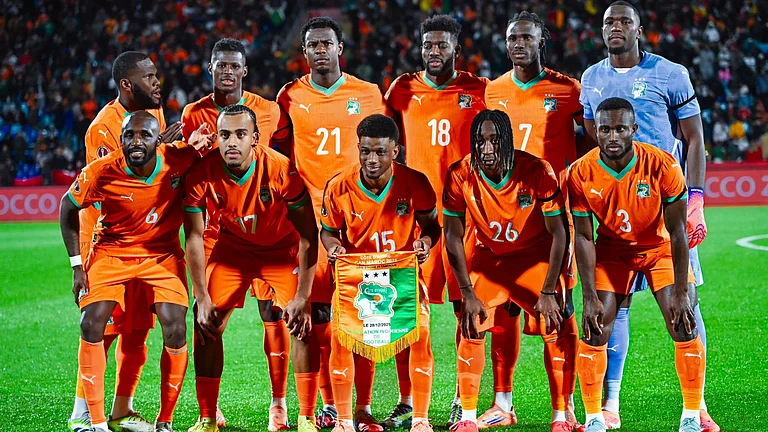Lords Of land
- Believed to be Kurmis from undivided Punjab, Patels have been progressive agriculturists
and land-owners in Gujarat - They were the first to try out cash crops like cotton and tobacco
- Known to be hard-working and optimistic, with the guts to take business risks
- Highly clannish and bound to tradition but pretty modern in their outlook on life
- Great sense of pride in their community, its self-reliance
- Great institution-builders, with a keen eye on making money work
***
‘P for P’ is a phrase heard often in Gujarat. First and foremost, a Patel will stand by another Patel, whatever the circumstances. “Patels who earn well make it a point to plough back some wealth to create facilities for the community and for society at large,” says Gordhanbhai Zadaphia, former home minister and a Patel, who broke away from chief minister Narendra Modi and is now one of the prime movers of Keshubhai Patel’s Gujarat Parivartan Party. Zadaphia, it might be said, had to join Keshubhai; they are both Patels, after all.
Of Patel cohesion, instances abound. In Mokasan village, near Kalol, Patels have set up a cooperative to fund youths keen on going to the US but lacking the finances. Loans, often for huge sums, are organised on no more surety than a verbal promise to return the money once the borrower has settled down. In Patel-dominated Unjha town of north Gujarat, the agricultural produce marketing yard has covered all residents of the town and tehsil under a group accident insurance scheme.

| Amrita Patel, NDDB | Odhavji Raghavji Patel, Orpat Group |
How did one-third of the motels in the US come to be owned by Patidars, creating in the process the portmanteau coinage ‘Potel’ (a motel owned by a Patel)? As one who was part of the trade pointed out, the down payment was never a problem thanks to a network of relatives and community members. A place to stay came free and liquidity was never a problem. Additionally, there was a steady supply of helping hands. What more does a Patel need?
The dominant Patel stock has become the front face of Gujarat globally, raising both envy and ire. From politics to business, the list of prominent Patel names can take up reams of paper. “The Patidars are basically of farming stock. They became landowners under the rayatwari system of the Bombay Presidency. They were given land pattas and gradually acquired leadership positions as revenue collectors for the rulers. Thus the honorific Patel,” says Achyut Yagnik, founder secretary of SETU (Centre for Social Knowledge & Action), Ahmedabad, author of The Shaping of Modern Gujarat. “The Patels’ link with the soil makes them hard-working, confronting the vagaries of nature and having to migrate (in search of work as farm hands) has given them optimism and stomach for risk, their role in revenue-gathering has given them leadership qualities, their clannish moorings provide an essential safety belt.”
These factors have enabled the community to claw its way up in industry, trade, business or positions of importance. So many industry-specific initiatives in the state have come from the Patels: the diesel engine manufacturing units of Rajkot, the brass parts industry of Jamnagar, the ceramics industry of Morbi and the rest of Saurashtra. “Other than Agra, Rajkot was the only diesel engine manufacturing centre in India—since the sixties—and it was the result of Patel initiative,” says Vajubhai Mavani, a Patel who was president of the Rajkot Engineering Association for 20 years. “Today, there has been large-scale diversification into castings and automobile ancillaries. There would hardly be an automaker who does not source parts from here.”
In Surat—the business capital of the state—Patels have a fair share in the diamond cutting and polishing industry. Some of the entrepreneurship, much of the skilled labour and the muscle for handling competition come from the Patels of Bhavnagar and adjoining areas. The pharmaceuticals industry is another area into which Patels have made a recent foray: Zydus Cadila comes to mind.

| Girish Patel, Paras Pharma | Karsanbhai Patel, Nirma Group |
The evolution of the Patels makes for an interesting case study. Land reforms introduced by Morarji Desai (then heading the Bombay state) may have made land-owners out of tenant tillers in Saurashtra, but the prosperous Patels of what is now central Gujarat had to part with much of their land. “This, coupled with repeated famines, saw the enterprising Patidars migrate to East Africa and later, in a double migration of sorts, to the UK, the US, the West,” says Yagnik.
There’s no dearth of Patel pioneers. Tribhovandas Patel of Anand, whom Sardar Patel had asked to organise milk cooperatives, later provided the rock-like backing that helped the late Verghese Kurien bring his dairy revolution to fruition, making India the biggest milk producer in the world.
What Tribhovandas was to Kurien, Indira Gandhi’s commerce minister Manubhai Shah was to V.G. Patel in entrepreneurship. A young economist, fresh from the US after his doctorate, this Patel with ancestral connections to Karamsad gave up a bright future to come back to a disillusioning short stint with the Planning Commission. Shah, quick to see potential, harnessed him to set up the first industrial estate promoted by a state-level public sector corporation, at Aji in Rajkot. Under him, industrial estates promoted by the Gujarat Industrial Development Corporation (GIDC) came up, along the stretch between Vapi and Ahmedabad, laying the foundation for industrialisation.
V.G. Patel, who later became the director of the Entrepreneurship Development Institute (EDI), Ahmedabad, and is now chairman of the Consumer Education and Research Centre (CERC), fondly recollects the early days. “We had industrial estates, we set up an investment corporation to finance projects but the entrepreneurs to take advantage of it all were missing. If nascent Gujarat had to grow industrially, we needed a steady supply of entrepreneurs. So we motivated a group of 45 and conducted an entrepreneurship programme in April 1970. With almost hundred per cent finance being made available, 37 of them turned entrepreneurs and the programme was on,” he says. Thirteen years on, in 1983, the EDI was set up as a national resource institution, with funding from idbi. The idea turned into a movement: in three decades, EDI has trained 2,000 trainers, who in turn have trained some 10,000 entrepreneurs. The movement has been taken to 25 countries.
Because of their close bonding and economic strength, the Patels have wielded decisive political power. They possess the capacity to tilt political fortunes in 80 of Gujarat’s 182 assembly constituencies. The state has had three Patel chief ministers—the late Babubhai Patel, the late Chimanbhai Patel, and Keshubhai Patel—and a host of Patel ministers. The community has a strong hold over cooperative banks, dairies and agricultural marketing ventures—in fact, over much of Gujarat’s strong network of cooperatives.
It is common knowledge that the Patidars had moved away from the Congress in Gujarat after they were ignored during the chief ministership of Madhavsinh Solanki, the author and implementer of the KHAM—Kshatriya, Harijan, Adivasi, Muslims—formula. This was in 1985, when the Congress bagged a record 148 of the 182 seats. Is it just a coincidence that the Congress has never won in Gujarat in the quarter century thereafter?
Let’s give the last word to Yagnik. “Remember, the clannish approach of the Patidars has helped fuel their growth,” he says. “Patidars are also a step ahead of others, enjoying the first-mover’s advantage even as they take their quota of falls in their stride.”


























